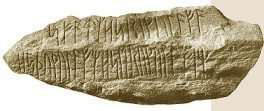WHO ARE US
My love for Wegies was born at the beginnings of eighties,
when they started to be mentioned on cat magazines. Few years later I met my first
Wegie at cat show in Trieste and I was suddenly enraptured by the wild and majestic
look of these big cats with magnetic, proud and clever eyes,
but also so sweet... How can I resist?
We are a little amateur breeding born few years ago (we came to Denmark in march 2003 to take our first female of Norwegian Forest Cat). We live in a flat in quiet suburb of Rome together with our cats: they are part of the family, they are cuddled and we lovely take care of them: they are our babies!
Breeding goal is to preserve this wonderful natural breed, that runned the risk of extinction, following the original standard. We share with our breeder friends the target of a well assorted cat variety and very good blood-lines, selecting those cats which shows the best standard.
...to be continued...
We are a little amateur breeding born few years ago (we came to Denmark in march 2003 to take our first female of Norwegian Forest Cat). We live in a flat in quiet suburb of Rome together with our cats: they are part of the family, they are cuddled and we lovely take care of them: they are our babies!
Breeding goal is to preserve this wonderful natural breed, that runned the risk of extinction, following the original standard. We share with our breeder friends the target of a well assorted cat variety and very good blood-lines, selecting those cats which shows the best standard.
...to be continued...
Why did we choose this name for the breeding? We was looking for a name
that would remember the lands where this natural race come from, a name
that bring the magic and wild fashion of being Norwegian Forest Cats.
The word RUNA (rune) means secret, whisper, mistery... Alfhabet and magic, comunication and prophecy: nowtoday runes still fascinate for the mistery in which they are wound.
The word RUNA (rune) means secret, whisper, mistery... Alfhabet and magic, comunication and prophecy: nowtoday runes still fascinate for the mistery in which they are wound.
Since II century a.C. Scandinavian people used this writing of alphabetical
type, that is at every symbol (rune) corresponded a sound. But runes were
used for other purposes, never to write long textes, but simply for short
inscriptions on objects or stones. For example, were used to declare
properties of objects where they are written on or for magic rituals: well
known is the usage of taking auspices from runes carved on little stick of
wood.
Often runes were carved on warriors' swords to propitiate the strength.
Sometimes runes were used also for public epigraphs: in second half of X
century, to make public the conversion to Christianity of Danish, King
Harald "Blu Tooth" ordered a communication to be carved on a stone.
 Engraving of Runes on stone,
Engraving of Runes on stone,the anciest danish gravestone found till now
Runic alphabet included 24 signs: it is called fuÞark, name resulting from
first six letters of the alphabet: f, u, Þ, a, r, k. Their main
characteristic is to have neither right angles nor rounded shapes, maybe
because they followed signs made in wood on which were carved.
Every rune has an acrophonic name, that is name starts with the sound represented by the rune: e.g. rune t is called Týr, as the god. In VII century, runic alphabet was reduced to 16 signs, so that some confusions among sounds arised, and then it disappeared with introdution of Latin one.
Every rune has an acrophonic name, that is name starts with the sound represented by the rune: e.g. rune t is called Týr, as the god. In VII century, runic alphabet was reduced to 16 signs, so that some confusions among sounds arised, and then it disappeared with introdution of Latin one.